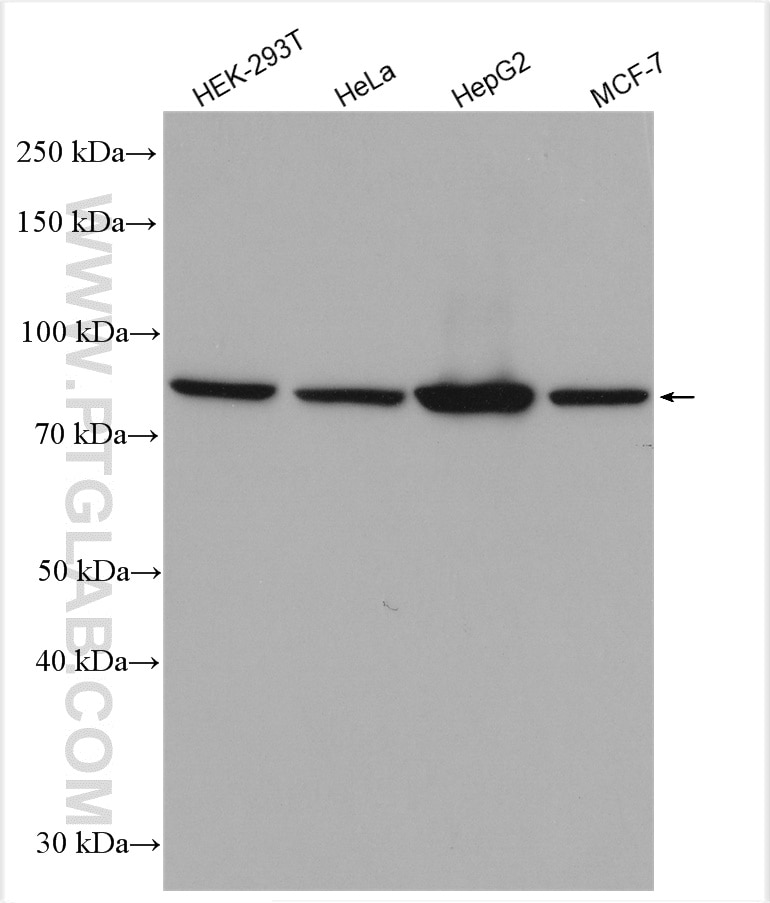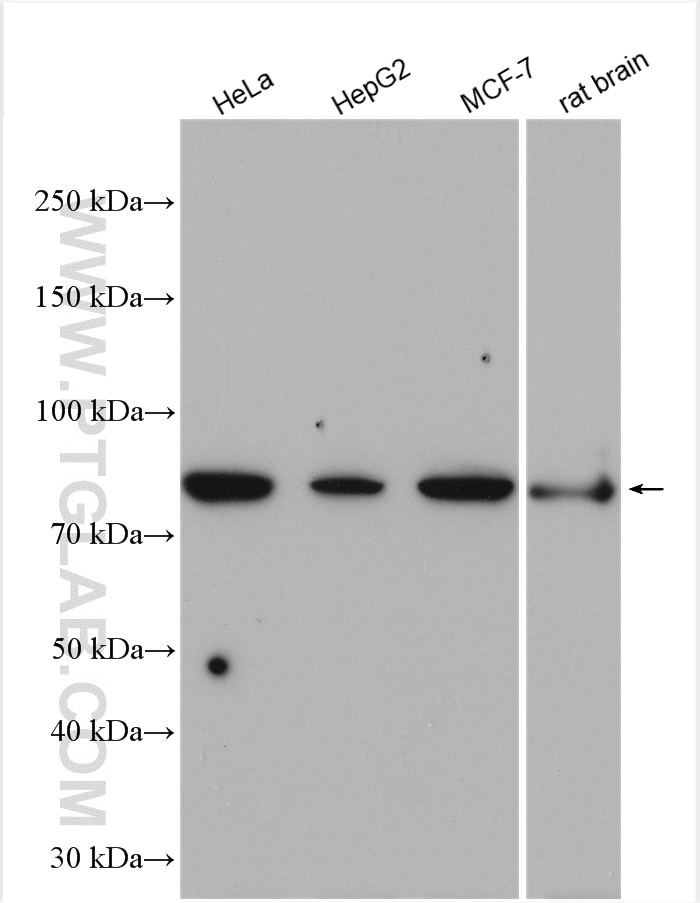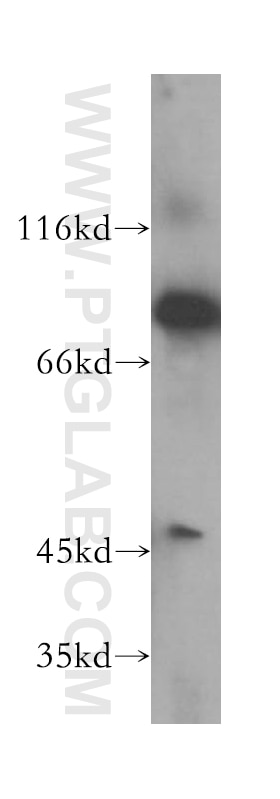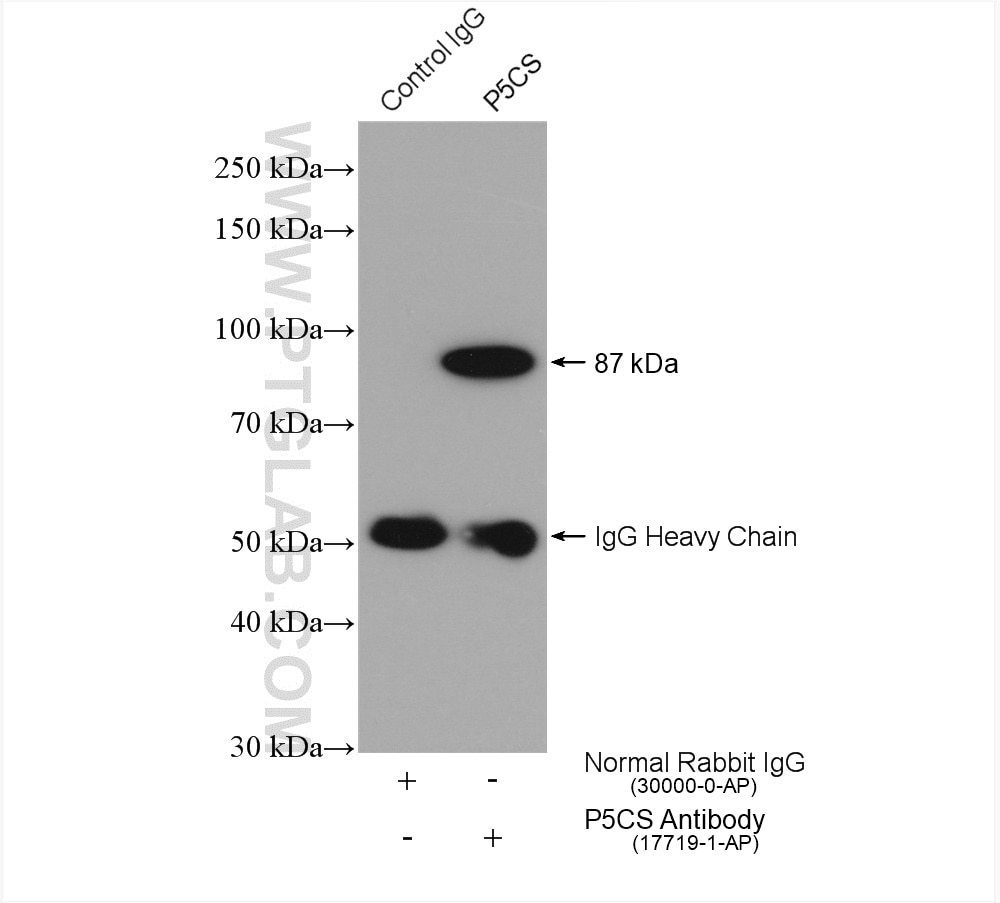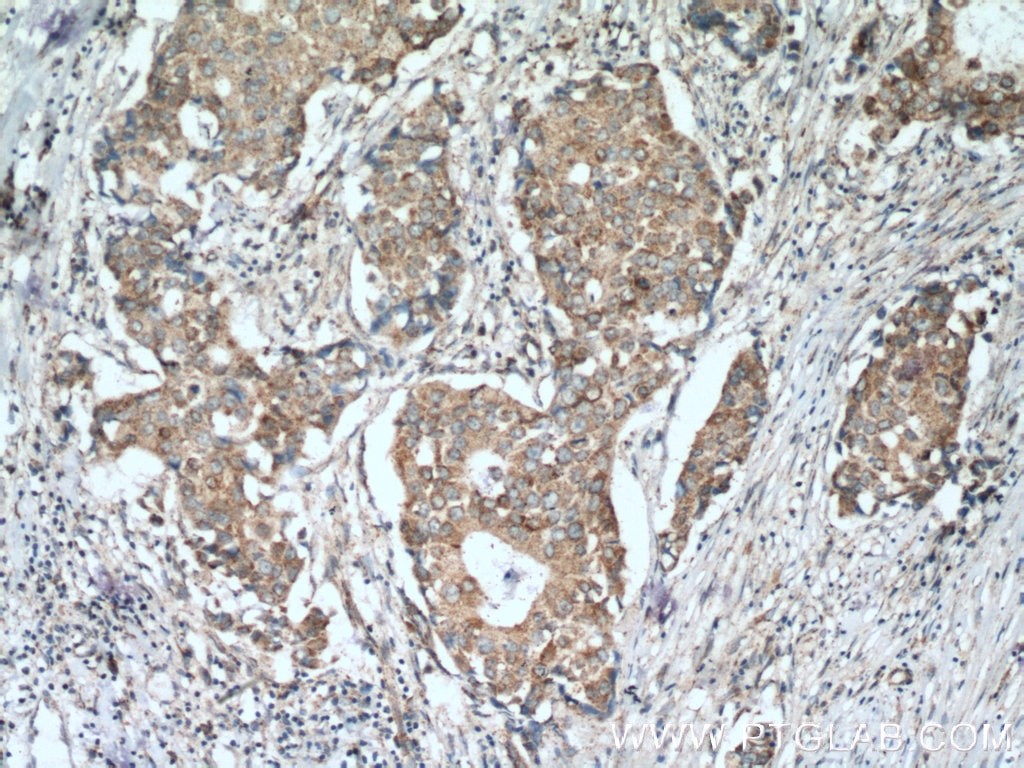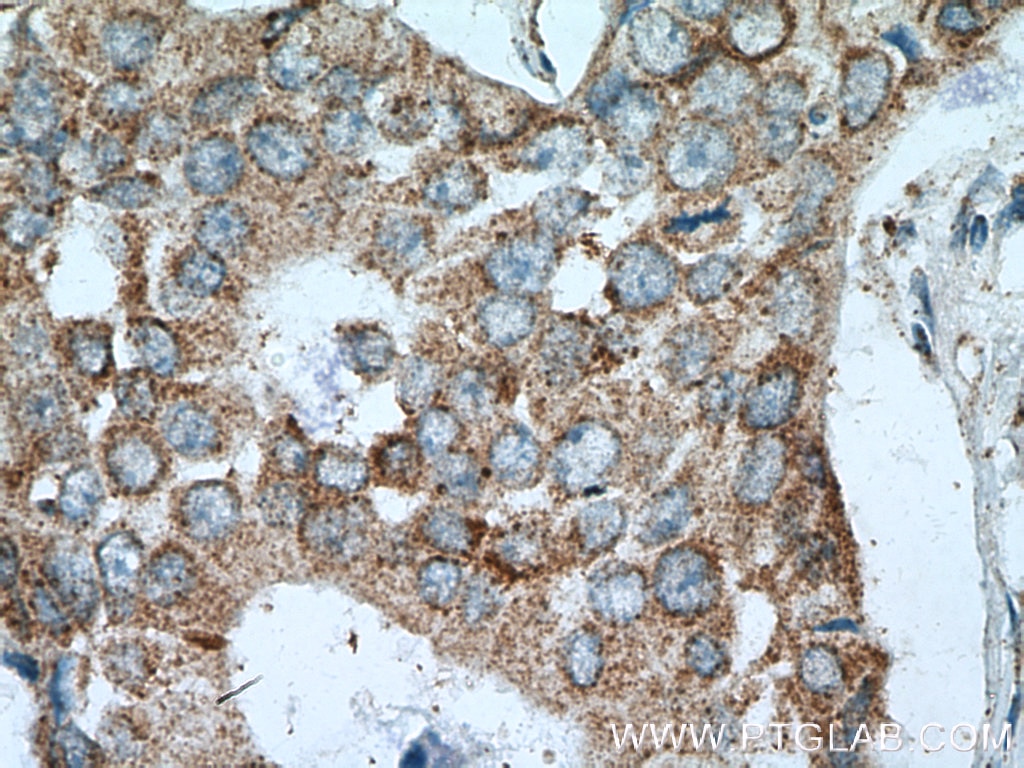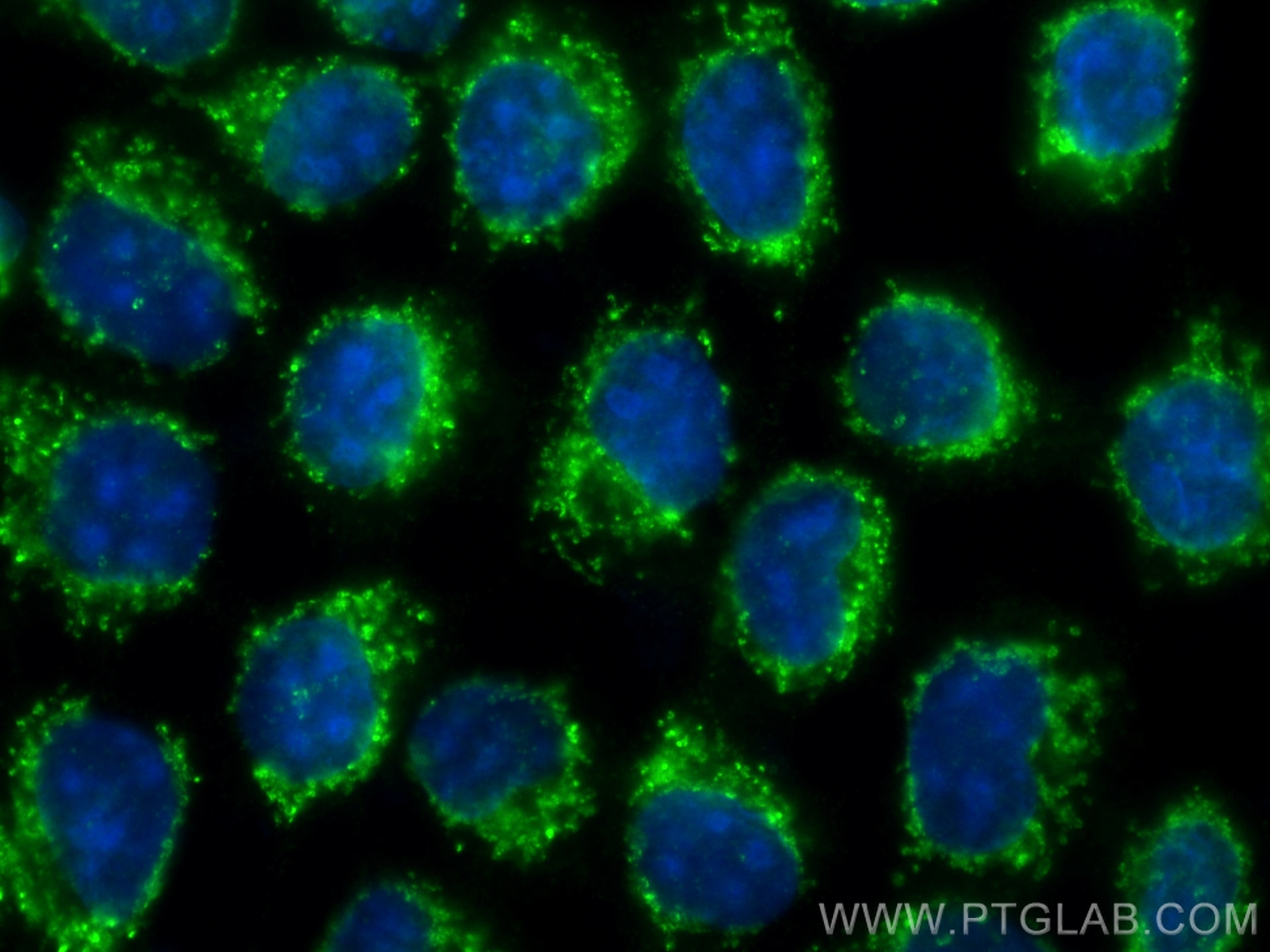- Phare
- Validé par KD/KO
Anticorps Polyclonal de lapin anti-P5CS
P5CS Polyclonal Antibody for WB, IP, IF, IHC, ELISA
Hôte / Isotype
Lapin / IgG
Réactivité testée
Humain, rat, souris
Applications
WB, IHC, IF/ICC, IP, CoIP, ELISA
Conjugaison
Non conjugué
N° de cat : 17719-1-AP
Synonymes
Galerie de données de validation
Applications testées
| Résultats positifs en WB | cellules HEK-293T, cellules HeLa, cellules HepG2, cellules MCF-7, tissu cérébral de rat, tissu cérébral de souris |
| Résultats positifs en IP | tissu cérébral de souris, |
| Résultats positifs en IHC | tissu de cancer du sein humain, il est suggéré de démasquer l'antigène avec un tampon de TE buffer pH 9.0; (*) À défaut, 'le démasquage de l'antigène peut être 'effectué avec un tampon citrate pH 6,0. |
| Résultats positifs en IF/ICC | cellules A431, |
Dilution recommandée
| Application | Dilution |
|---|---|
| Western Blot (WB) | WB : 1:2000-1:16000 |
| Immunoprécipitation (IP) | IP : 0.5-4.0 ug for 1.0-3.0 mg of total protein lysate |
| Immunohistochimie (IHC) | IHC : 1:50-1:500 |
| Immunofluorescence (IF)/ICC | IF/ICC : 1:50-1:500 |
| It is recommended that this reagent should be titrated in each testing system to obtain optimal results. | |
| Sample-dependent, check data in validation data gallery | |
Applications publiées
| KD/KO | See 6 publications below |
| WB | See 17 publications below |
| IHC | See 2 publications below |
| IF | See 2 publications below |
| CoIP | See 1 publications below |
Informations sur le produit
17719-1-AP cible P5CS dans les applications de WB, IHC, IF/ICC, IP, CoIP, ELISA et montre une réactivité avec des échantillons Humain, rat, souris
| Réactivité | Humain, rat, souris |
| Réactivité citée | rat, Humain, souris |
| Hôte / Isotype | Lapin / IgG |
| Clonalité | Polyclonal |
| Type | Anticorps |
| Immunogène | P5CS Protéine recombinante Ag12100 |
| Nom complet | aldehyde dehydrogenase 18 family, member A1 |
| Masse moléculaire calculée | 795 aa, 87 kDa |
| Poids moléculaire observé | 87 kDa |
| Numéro d’acquisition GenBank | BC106054 |
| Symbole du gène | P5CS |
| Identification du gène (NCBI) | 5832 |
| Conjugaison | Non conjugué |
| Forme | Liquide |
| Méthode de purification | Purification par affinité contre l'antigène |
| Tampon de stockage | PBS avec azoture de sodium à 0,02 % et glycérol à 50 % pH 7,3 |
| Conditions de stockage | Stocker à -20°C. Stable pendant un an après l'expédition. L'aliquotage n'est pas nécessaire pour le stockage à -20oC Les 20ul contiennent 0,1% de BSA. |
Informations générales
Delta 1-pyrroline-5-carboxylate synthetase (P5CS), also named as GSAS, P5CS, PYCS, catalyzes the ATP and the NAD(P)H-dependent conversion of L-glutamate to glutamic gamma-semialdehyde (GSA) which is the metabolic precursor for proline biosynthesis(PMID:8761662). This protein includes 2 domains: glutamate 5-kinase and gamma-glutamyl phosphate reductase. In the N-terminal section, it belongs to the glutamate 5-kinase family and in the C-terminal section, it belongs to the gamma-glutamyl phosphate reductase family. Defects in ALDH18A1 are the cause of cutis laxa, autosomal recessive, type 3A (ARCL3A)(PMID:18478038). It has 2 isoforms produced by alternative splicing.
Protocole
| Product Specific Protocols | |
|---|---|
| WB protocol for P5CS antibody 17719-1-AP | Download protocol |
| IHC protocol for P5CS antibody 17719-1-AP | Download protocol |
| IF protocol for P5CS antibody 17719-1-AP | Download protocol |
| IP protocol for P5CS antibody 17719-1-AP | Download protocol |
| Standard Protocols | |
|---|---|
| Click here to view our Standard Protocols |
Publications
| Species | Application | Title |
|---|---|---|
J Exp Med Inhibiting both proline biosynthesis and lipogenesis synergistically suppresses tumor growth.
| ||
Autophagy Autophagy loss impedes cancer-associated fibroblast activation via downregulating proline biosynthesis. | ||
Proc Natl Acad Sci U S A Reprogramming of proline and glutamine metabolism contributes to the proliferative and metabolic responses regulated by oncogenic transcription factor c-MYC. | ||
Int J Mol Sci Translation Fidelity and Respiration Deficits in CLPP-Deficient Tissues: Mechanistic Insights from Mitochondrial Complexome Profiling | ||
Sci Rep Proline biosynthesis augments tumor cell growth and aerobic glycolysis: involvement of pyridine nucleotides.
|
Avis
The reviews below have been submitted by verified Proteintech customers who received an incentive forproviding their feedback.
FH Kristian (Verified Customer) (02-05-2020) | The cells were collected, then lyzed five minutes at 95C in SDS-loading buffer.The lysate was run on a 4-20% denaturing SDS-PAGE, then blotted unto a nitrocellulose membrane. The protein was detected using primary antibody diluted 1:1,000 in blotto (PBS, 5% milk, 0.1% Tween-20), then secondary in a 1:10,000 dilution in blotto.Detected using ECL reagents.
 |
